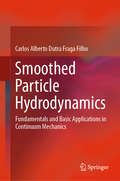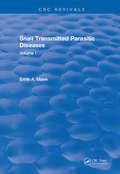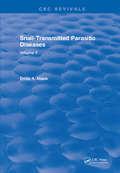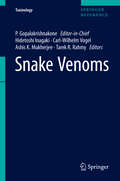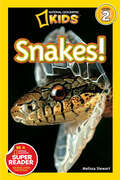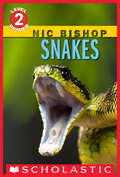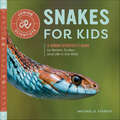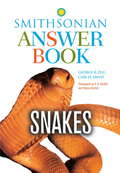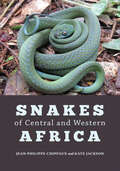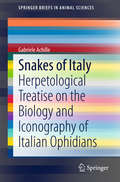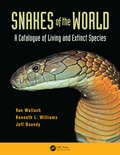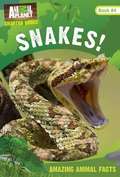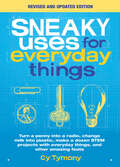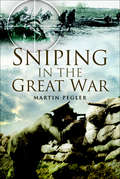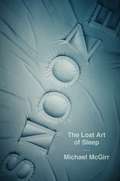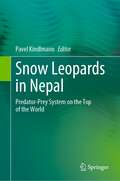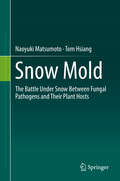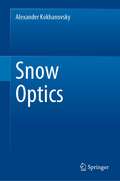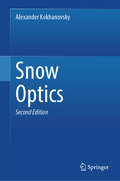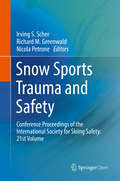- Table View
- List View
Smoothed Particle Hydrodynamics: Fundamentals and Basic Applications in Continuum Mechanics
by Carlos Alberto Dutra Fraga FilhoThis book is based on results obtained over a decade of study and research. It questions the use of dynamic molecular models in the continuum scale providing alternative solutions to open problems in the literature. It provides a physical-mathematical understanding of the differential equations that govern fluid flow and energy transport, serving as a reference to the application of Smoothed Particle Hydrodynamics in continuum fluid mechanics and transport phenomena. The physical-mathematical modelling of the problems in the continuum scale and the employment of the SPH method for solving the equations are presented. Examples of applications in continuum fluid mechanics with numerical results and discussions are also provided. This literature defends the concepts of continuum mechanics and the application of boundary treatment techniques that do not violate the laws of physics.
Smoother Pebbles: Essays in the Sociology of Science
by Jonathan R. ColeUntil the middle of the twentieth century, few thought of science as a social system, instead seeing scientific discovery as the work of individual geniuses. Columbia University’s Department of Sociology played a pivotal role in advancing the social study of science. Researchers of the “Columbia Program” analyzed how science works as a social institution, exploring its norms, values, and structure.Smoother Pebbles presents a collection of essays authored or coauthored by Jonathan R. Cole, a leading Columbia Program figure, that trace the development and institutionalization of the sociology of science. Spanning from the 1960s to the 2020s and including both empirical and theoretical studies of science, the book is at once wide-ranging and united by core questions. Are scientists rewarded for the merits of their work or for other reasons? How does the system of social stratification in science operate? Has the funding of scientists been the result of an “old boys’ network”? How fair is the peer review process? In what ways does science fall short of its universalistic ideals? What factors have constrained opportunities for women in science? How has science fared amid attacks on academic freedom and free inquiry at universities? Cole’s introduction contextualizes both individual essays and the major concerns of the Columbia Program. Smoother Pebbles is essential reading for those interested in the growth and crucial questions of the sociology and social studies of science.
Snail Transmitted Parasitic Diseases: Volume I
by Emile A. MalekResearch on snail-transmitted disease has continued at a considerable pace during the last twenty years, and sveral investigators have made valuable contributions to our knowledge of these diseases.The objective of this book is to present an up-to-date account of the infections or diseases of the world which are transmitted by snails, and in which each disease is considered in much greater detail than is usually provided by textbooks on general, medical or veterinary parasitology.These two volumes cover the infections or diseases that are caused by certain helminths which are transmitted by snails.
Snail Transmitted Parasitic Diseases: Volume II
by Emile A. MalekResearch on snail-transmitted disease has continued at a considerable pace during the last twenty years, and sveral investigators have made valuable contributions to our knowledge of these diseases.The objective of this book is to present an up-to-date account of the infections or diseases of the world which are transmitted by snails, and in which each disease is considered in much greater detail than is usually provided by textbooks on general, medical or veterinary parasitology.These two volumes cover the infections or diseases that are caused by certain helminths which are transmitted by snails.
Snake Venoms
by Hidetoshi Inagaki Carl-Wilhelm Vogel Ashis K. Mukherjee Tarek R. RahmyInitially, because of the inadequate sensitivity of devices and other limitations, only major venom components of the dominant species were studied. However, in last two decades, increased sensitivity of devices and the development of new techniques, such as transcriptomics and proteomics techniques, have permitted us to analyze the structures and functions of rare species and to identify novel minor components. As a result, the number of venom components identified is increasing dramatically and the physiological functions of each component is more deeply understood. The scope of this book provides the readers an updated and comprehensive presentation on snake venoms. The subjects are divided into six sections, starting with the overview of snake venom compositions in Malaysian species, followed by description of enzymes and enzyme inhibitors contained in snake venoms. Also discussed are the effects of snake venom on cellular receptors, ion channels, blood, and lymph, as well as cytotoxic and antimicrobial molecules present in snake venoms. The last section covers the clinical consequences of envenomation and the management of snakebites using antivenins.
Snakes (National Geographic Kids Readers)
by Melissa StewartThey&’re SSSSLITHERY! SLIPPERY! They creep us out! But get to know them and you&’ll find snakes private, quiet types who just want a cool, shady place to call home. From the tip of their forked tongues, to skin that sheds, to the rattles on certain tails, these creatures have secrets all kids will love. Cool photos and fun facts slip us inside their surprising world.National Geographic supports K-12 educators with ELA Common Core Resources.Visit www.natgeoed.org/commoncore for more information.
Snakes (Nature's Children)
by Tim HarrisWhere do snakes live? What do snakes eat? How big are snakes? Are all snakes dangerous? Find out the answers to these questions and learn all about the physical characteristics, behavior, and habitats of snakes.
Snakes (Scholastic Reader, Level 2)
by Nic BishopAdapted from the award-winning nonfiction book Nic Bishop Snakes, this Level 2 reader features Nic's trademark close-up photographs and thrilling facts!Some snakes are more dangerous than others. Those that have venom, or poison, can kill their prey with just one bite!Now even the youngest readers can join Sibert Medal-winning photographer and biologist Nic Bishop as he takes a closer look at the world's most amazing animals! In this book, Nic introduces fun facts about snakes and their bodies, habits, and life cycle. This adaptation of the award-winning picture book has accessible Level 2 text that is perfect for beginners and eye-catching photographs that will delight naturalists of all ages. This reader includes a brief author's note, glossary, and photo index.
Snakes for Kids: A Junior Scientist's Guide to Venom, Scales, and Life in the Wild (Junior Scientists)
by Michael G. StarkeyCome face to face with mysterious snakes with the Junior Scientists series for kids ages 6 to 9Take an amazing journey into the wonderful world of snakes—fangs, rattles, scales, and all. Snakes for Kids is filled with fascinating facts and wild photographs that will take you close up to serpents from around the globe! Dive into their habitats and life cycles and see how their relationships with other animals create balance in the food web and help keep ecosystems healthy.Start by learning more about some of your favorite snakes—from the King Cobra to the massive Anaconda. Discover how they move, what they eat, why they shed their skin, and plenty of other cool details. You'll also meet a few lesser-known snakes, like the strange family of blind snakes that tunnel underground. Learn everything there is to know about these mysterious reptiles and become an expert on our slithering friends.Snakes for Kids includes:So many snakes!—Check out all the interesting information on 45 different species.Age-appropriate—The reading level is perfect for kids ages 6 to 9.Colorful photos—Detailed pictures allow you to see what the snakes look like in the wild.If you've been searching for a great kids book about snakes, look no further—this one has it all.
Snakes in Question, Second Edition
by George R. Zug Patricia Bartlett Carl H. Ernst Richard D. BartlettThis new edition of Snakes in Question has been completely updated to take into account the most recent research available, offering useful scientific information about snakes while dispelling many widely-circulated myths and common fears. Accompanied by 100 stunning color photographs and written in the popular question-and-answer format of Smithsonian's "In Question" series, the book tells how snakes breathe, hear, smell, and much more. It covers not only the life cycle of snakes but also explores such phenomena as the rattlesnake's rattle, the viper's hiss, and the snake charmer's secrets. It addresses common folktales about snakes (do snakes milk cows?) and describes giant snakes, both real and imaginary. The authors also give expert advice on such subjects as distinguishing venomous species from harmless look-alikes and keeping snakes as pets.
Snakes of Central and Western Africa
by Kate Jackson Jean-Philippe ChippauxThe first—and only—authoritative guide to the snakes of Central and Western Africa.Nobody knows exactly how many snake species live in the biodiversity hotspots of Western and Central Africa. While field guides abound that make mammals, birds, and even insects identifiable for residents, travelers, and scientists, half a continent's herpetological richness has remained shrouded in mystery. In a region where nearly 30,000 people die from snake bites every year, even dire medical necessity has been an insufficient inducement for researchers to take on the daunting task of assembling an authoritative list of extant species, let alone a full descriptive record to aid in identification, the essential first step to administering an effective antivenin. The reptiles of Central Africa, particularly, are the most poorly studied in the world, despite their crucial role in the survival of threatened ecosystems.With Snakes of Central and Western Africa, Jean-Philippe Chippaux and Kate Jackson have created a game changer. The result of years of field research and systematic study in the world's leading museums, this book compiles for the first time a comprehensive guide to the region's snakes. Covering a vast swath of the continent, ranging from Mauritania in the northwest to Rwanda in the east and Angola in the south, Chippaux and Jackson provide detailed accounts for the more than 200 species of snakes that inhabit the region. The first part of the book is devoted to the taxonomic characters used for identifying snakes. The authors deal with the evolution and biogeography of African snakes as well as epidemiological and clinical aspects of snakebite. The remaining chapters are organized phylogenetically, following the latest consensus on evolutionary patterns of major snake lineages in sub-Saharan Africa. Species identification is facilitated by simple and accessible dichotomous keys and detailed descriptions of morphological characteristics, complemented by numerous drawings, photos, and distribution maps. Invaluable information on taxonomy and natural history is also included. The book concludes with a comprehensive index and a list of nearly 600 references. Snakes of Central and Western Africa illuminates a previously little-known part of the natural world, provides vital information that could save many lives, and will make an excellent addition to any herpetology library.
Snakes of Italy
by Gabriele AchilleThis book offers a comprehensive review of the biology of snakes, focusing on Italian species. The snakes of Italy belong to the two families Colubridae and Viperidae, and for each species the systematic classification and chorology including distribution maps are presented. Furthermore, readers will learn how to carry out field studies, how to handle snakes and how to photograph them. The book concludes with a chapter on the iconography of historical Italian snakes and their importance in popular science, and one on myths and legends. This SpringerBriefs volume will appeal to herpetologists and technical staff. The section on iconography may also be of interest to museum staff.
Snakes of the World: A Catalogue of Living and Extinct Species
by Van Wallach Kenneth L. Williams Jeff BoundySnakes of the World: A Catalogue of Living and Extinct Species-the first catalogue of its kind-covers all living and fossil snakes described between 1758 and 2012, comprising 3,509 living and 274 extinct species allocated to 539 living and 112 extinct genera. Also included are 54 genera and 302 species that are dubious or invalid, resulting in reco
Snakes of the World: A Supplement
by Jeff BoundySnakes of the World: A Catalogue of Living and Extinct Species, published in 2014, was the first catalogue of its kind and covered all living and fossil snakes described between 1758 and 2012. This new volume will be a supplement to this important herpetological reference and will include new published data on snakes named and recognized since 2012. Key Features Supplements and updates Wallach et al. – Snakes of the World – the only work to cover all living snakes in the world. Includes updates for fossil snakes named since the publication of Wallach et al. Summarizes the systematic snake literature published since the appearance of Wallach et al. Genera and species are listed alphabetically for ease of reference. Related Titles Wallach, V., K. L. Williams, and J. Boundy. Snakes of the World: A Catalogue of Living and Extinct Species (ISBN 978-1-138-03400-6) Aldridge, R. D. and D. M. Sever, eds. Reproductive Biology and Phylogeny of Snakes (ISBN 978-1-57808-701-3) Caldwell, M. W. The Origin of Snakes: Morphology and the Fossil Record (ISBN 978-1-4822-5134-0)
Snakes!
by Lori Stein James Buckley Animal PlanetAnimal Planet introduces information-packed nonfiction chapter books that are just right for pleasure reading and schoolwork. Slither along to an amazing adventure in Snakes!. Meet the biggest, the fastest, and the most venomous snakes--from massive anacondas and pythons to fierce and fanged vipers and cobras. Learn about snakes that climb trees and others that swim in ocean waters. Snakes! is the perfect overview for developing readers ready to explore this popular animal subject on their own. Special features include full-color photography throughout, "Meet the Scientist" sidebars, and "In Your Newsfeed" articles about amazing new discoveries.
Snakes, Sunrises, and Shakespeare: How Evolution Shapes Our Loves and Fears
by Gordon H. OriansOur breath catches and we jump in fear at the sight of a snake. We pause and marvel at the sublime beauty of a sunrise. These reactions are no accident; in fact, many of our human responses to nature are steeped in our deep evolutionary past--we fear snakes because of the danger of venom or constriction, and we welcome the assurances of the sunrise as the predatory dangers of the dark night disappear. Many of our aesthetic preferences--from the kinds of gardens we build to the foods we enjoy and the entertainment we seek--are the lingering result of natural selection. In this ambitious and unusual work, evolutionary biologist Gordon H. Orians explores the role of evolution in human responses to the environment, beginning with why we have emotions and ending with evolutionary approaches to aesthetics. Orians reveals how our emotional lives today are shaped by decisions our ancestors made centuries ago on African savannas as they selected places to live, sought food and safety, and socialized in small hunter-gatherer groups. During this time our likes and dislikes became wired in our brains, as the appropriate responses to the environment meant the difference between survival or death. His rich analysis explains why we mimic the tropical savannas of our ancestors in our parks and gardens, why we are simultaneously attracted to danger and approach it cautiously, and how paying close attention to nature’s sounds has resulted in us being an unusually musical species. We also learn why we have developed discriminating palates for wine, and why we have strong reactions to some odors, and why we enjoy classifying almost everything. By applying biological perspectives ranging from Darwin to current neuroscience to analyses of our aesthetic preferences for landscapes, sounds, smells, plants, and animals, Snakes, Sunrises, and Shakespeare transforms how we view our experience of the natural world and how we relate to each other.
Snakes, Sunrises, and Shakespeare: How Evolution Shapes Our Loves and Fears
by Gordon H. OriansThe eminent zoologist &“extends his pioneering work in evolutionary biology&” to examine &“our preferences, predilections, fears, hopes, and aspirations&” (Stephen R. Kellert, author of Birthright). Why do we jump in fear at the sight of a snake and marvel at the beauty of a sunrise? These impulsive reactions are no accident; in fact, many of our human responses to nature are steeped in our evolutionary past—we fear snakes because of the danger of venom, and we welcome the assurances of sun as the predatory dangers of night disappear. According to evolutionary biologist Gordon Orians, many of our aesthetic preferences—from the kinds of gardens we build to the foods we enjoy and the entertainment we seek—are the lingering result of natural selection. In Snakes, Sunrises, and Shakespeare, Orians explores the role of evolution in human responses to the environment, applying biological perspectives ranging from Darwin to current neuroscience. Orians reveals how our emotional lives today are shaped by decisions our ancestors made centuries ago on African savannas as they selected places to live, sought food and safety, and socialized in small hunter-gatherer groups. During this time our likes and dislikes became wired in our brains, as the appropriate responses to the environment meant the difference between survival or death. His rich analysis explains why we mimic the tropical savannas of our ancestors in our parks and gardens, why we are simultaneously attracted to and repelled by danger, and how paying close attention to nature&’s sounds has made us an unusually musical species.
Sneaky Uses for Everyday Things, Revised Edition: Turn a Penny into a Radio, Change Milk into Plastic, Make a Dozen STEM projects with Everyday Things, and Other Amazing Feats (Sneaky Books)
by Cy Tymony&“A science activity book &“offering readers a chance to become real-life MacGyvers... [with] sections on gimmicks, gadgets and survival techniques. . . .&” (Publishers Weekly) Do you know how to make something that can tell whether the $20 bill in your wallet is a fake? Or how to generate battery power with simple household items? Or how to create your own home security system? Science-savvy author Cy Tymony does. And now you can learn how to create these things and more than forty other handy gadgets and gizmos in Sneaky Uses for Everyday Things. More than a simple do-it-yourself guide, this quirky collection is a valuable resource for transforming ordinary objects into the extraordinary. With over 80 solutions and bonus applications at your disposal, you will be ready for almost any situation. Included are survival, security, self-defense, and silly applications that are just plain fun. You'll be seen as a superhero as you amaze your friends by: * Transforming a simple FM radio into a device that enables you to eavesdrop on tower-to-air conversations. * Creating your own personalized electronic greeting cards. * Making a compact fire extinguisher from items typically found in a kitchen pantry. * Thwarting intruders with a single rubber band. By using run-of-the-mill household items and the easy-to-follow instructions and diagrams within, you'll be able to complete most projects in just a few minutes. Whether you use Sneaky Uses for Everyday Things as a practical tool to build useful devices, a fun little fantasy escape, or as a trivia guide to impress friends and family, this book is sure to be a reference favorite for years to come.
Sniping in the Great War
by Martin PeglerA military history analyzing the evolution of sniper warfare during WWI by the firearms expert and author of Eastern Front Sniper. From the sharpshooters of the American Civil War to Navy SEAL Chris Kyle, military snipers are legendary for their marksmanship and effectiveness in battle. The specialized role of the sniper developed among the ranks of the British Army over the course of World War I. As Martin Pegler shows in this wide-ranging study, the technique of sniping adapted rapidly to the conditions of static warfare that prevailed through much of the conflict. Pegler&’s account follows the development of sniping from the early battles of 1914, through the trench fighting and the attritional offensives of the middle years, to the renewed open warfare of 1918. Focusing on the British and German sniping war on the western front, Pegler also looks at how snipers operated at Gallipoli, Salonika, and on the Eastern Front. He also covers sniper training, fieldcraft, and counter-sniping measures in detail. Sniping in the Great War includes a full reference section detailing the sniping rifles of the period and assessing their effectiveness in combat. Also featured are vivid memoirs and eyewitness accounts that offer insight into the lethal skill of Great War snipers and their deadly trade.
Snooze: The Lost Art Of Sleep
by Michael McGirrA profound exploration of the precious resource of sleep—and of the causes and consequences of getting too little of it. Michael McGirr always had trouble sleeping. The arrival of baby twins, however, made him realize that he’d never before known true exhaustion. And while he celebrated these small children who brought him so much joy and tiredness, he found himself on a desperate and bone-weary journey in search of just a few extra winks a night. It was an adventure that would teach him more about what exactly sleep is, why we need it, and what it means when we don’t get enough of it. In Snooze, McGirr delves into the mysterious world of sleep, including its many benefits, its stubborn elusiveness, and exactly what our brains really get up to while we’re in bed. He offers readers a tour through the odd sleep patterns of some of history's greatest minds, including Aristotle, Homer, Shakespeare, Florence Nightingale, Thomas Edison, and more. He looks, too, at the demise of sleep in our increasingly fragmented modern world—and examines what that means for everyone from the Average Joe in the workplace to those with serious sleep disorders. The result is both entertaining and enlightening—the perfect book for those sleepless nights.
Snow Leopards in Nepal: Predator-Prey System on the Top of the World
by Pavel KindlmannSnow leopard (Panthera uncia) is an endangered species, and its population size is steadily declining. The main threats to the snow leopard include illegal trade, conflict with locals (human-snow leopard conflict), lack of conservation, awareness and policy, and climate change. To avoid its extinction, we badly need a good knowledge of its ecology, distribution and population dynamics, including interactions with its prey, which will take into account various scenarios of changes in climate and human impact on snow leopard. This book aims to put together a considerable amount of unpublished data collected by the co-author of most of the chapters, Bikram Shrestha, which might be useful for other researchers working on snow leopard. In addition, researchers might find it useful to have a key for determining the diet of snow leopard based on remnants of its food in its scats. Last, but not least, based on the difficulty we experienced trying to compare and combine different sets of results, we propose a general methodology for collecting data. Thus, this book is not an all-encompassing compendium, but an attempt to fill some gaps in the literature and to show, how to publish new data on snow leopard in a useful and workable way. The first part, describing the main features of snow leopard and its main prey ecology, is followed by a comprehensive review of data available on its abundance and threats to its survival. The third, most extensive part—the substance of the book—presents new data from 15 years of intensive camera trapping combined with scat sampling. These data are analyzed by means of advances GIS and genetic techniques, which yields a large amount of conservation implications.The purpose of this book is to provide a tool for both environmental managers and researchers to find quickly what is known about this species for conservation planning and for an effective protection of snow leopard. However, enthusiasts interested in wild cats may welcome the book, too.
Snow Mold
by Naoyuki Matsumoto Tom HsiangThis book provides biological and agricultural insights into snow mold, a fungal disease affecting land plants observed after the melting of snow. Snow mold fungi can cause significant damage to plant growth both in agriculture and in the natural environment, but the interesting ecology and biology described here will capture the attention of scientists in diverse disciplines. The book describes diverse biological phenomena such as cold tolerance of snow mold fungi and plants and their interactions, occurring in an ecologically unique environment under the snow, which maintains constant low temperature and high humidity. Presented here are the unique strategies of snow mold fungi to survive in diverse habitats and the defensive mechanism in plants tolerant to snow mold fungi infection, as well as the conventional control methods using fungicide or cultural practice. Also contained in the book is speculation on the impact of a changing environment on snow mold diseases and their effects on agricultural production.
Snow Optics
by Alexander KokhanovskyThis book is the first book of its kind, focusing exclusively on the optical properties of snow. As a complex and turbid medium, snow is approached as a strongly light-scattering (in the visible spectrum) medium with large, nonspherical ice grains. The book discusses both experimental and theoretical results, as well as the remote sensing of snow using ground-based, airborne and satellite optical instrumentation. The book will be of particular importance for researchers studying snow characteristics (the size of grains, snow pollution and albedo) using various remote-sensing techniques.
Snow Optics
by Alexander KokhanovskyThis book is the first book of its kind, focusing exclusively on the optical properties of snow. As a complex and turbid medium, snow is approached as a strongly light-scattering (in the visible spectrum) medium with large, nonspherical ice grains. The book discusses both experimental and theoretical results, as well as the remote sensing of snow using ground-based, airborne and satellite optical instrumentation. The book will be of particular importance for researchers studying snow characteristics (the size of grains, snow pollution and albedo) using various remote-sensing techniques.
Snow Sports Trauma and Safety: Conference Proceedings of the International Society for Skiing Safety: 21st Volume
by Irving S. Scher, Richard M. Greenwald and Nicola PetroneThis book is open access under a CC BY-NC 2.5 license. This book covers the latest in snow sport epidemiology, snow sport injuries and treatment, and biomechanical/mechanical engineering related to snow sports injuries (mechanisms of injury, injury prevention by equipment design, injury prevention by design of resort features, and more). It brings together a collection of papers from the International Congress on Ski Trauma and Safety (the biennal meeting of the International Society for Skiing Safety) and presents the latest research on the effectiveness of winter sports equipment, the behavior of winter sports participants, and the epidemiology and biomechanics of winter sports injuries. This is an ideal book for researchers and professionals working in the field of sports medicine and safety. This book also: Covers the latest body of literature dealing with safety in winter sports as well as the prevention and treatment of injuries sustained by participants in these activities Broadens readers’ understanding of snow sport injury prevention research Illustrates ways safety standards for snow sports can be improved based on evidence-based research.
